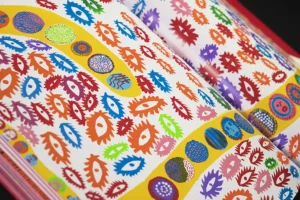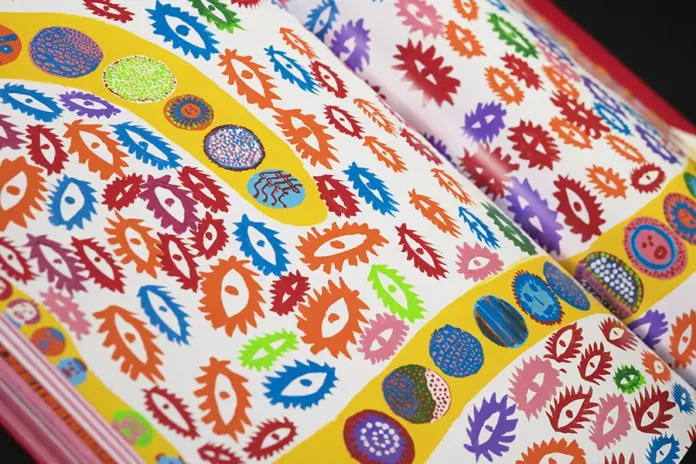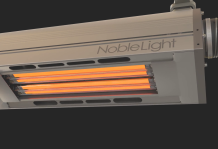By Liz Stevens, writer, UV+EB Technology
UV and, increasingly, UV LED play a role in book publishing, in the industry’s printed book sector. Like some other industries affected during the COVID-19 pandemic, print book publishing saw a rise in unit sales when people worldwide retreated from public life and subsequently ramped up their discretionary spending. Post-pandemic, print book sales have moderated somewhat but seem to have remained relatively strong. The role of UV in print book publishing includes curing ink on paper, curing special effects on book covers and curing the adhesive applied to a book’s spine to bind the entire package. UV+EB Technology surveyed a trio of UV and UV LED curing technology manufacturers to learn about their insight into the advantages of using UV and UV LED technologies in print book production and to hear their thoughts on the state of the industry and its near future.
The Manufacturers
Robert Waddington is product line manager, curing and drying at BW Converting, Green Bay, Wisconsin, which includes the Baldwin brand, a maker of technologies for print-production processes including UV and UV LED curing and drying lamps.
Nathan Ciara is sales director of Hönle America Business Unit, Sugar Grove, Illinois, which includes Eltosch Grafix, a maker of UV and UV LED curing systems and other technologies for the printing industry.
Gary Doman is international sales manager at GEW (EC) Limited, Crawley, West Sussex, UK, which designs and manufactures arc and UV LED curing systems for printing, coating and converting applications.
The Big Picture

Per Publishers Weekly 1, citing statistics reported by Circana BookScan, total unit sales of print books jumped from 697,311,000 in 2019 to a whopping 837,655,000 in 2021. For 2023, the total of 767,356,000 units sold was a drop from the 2021 figure but still above the 2019 figure.
While BW Converting’s Robert Waddington has seen evidence that book printing may have dropped substantially from its peak at the height of the pandemic, Hönle’s Nathan Ciara reports that his company’s book-oriented technology sales now are on the rise. “After several years,” said Ciara, “there seems to be an increase in the number of book applications sold again.”
GEW’s Gary Doman echoed and expanded on Ciara’s assessment. “The printed book business is very much alive and well,” said Doman. “But in the world today, the challenges for book publishers are not just about competition with other publishers; the challenges include other technologies. We now have printed books, audio books and e-books. We may have thought that e-books would be the death knell for printed books but, interestingly, the printed book market has seen a resurgence. I think people would still like a physical book especially, for example, when they go on holiday.” Doman noted that the production strategy of the book printing market has changed dramatically in recent years. “Instead of printing 10,000 books as they might have done years ago,” he said, “publishers now only print 1,000 books at a time. And when those sell off the shelf, they print another 1,000 books.” This change in volume has created an opportunity for short-run printing technologies, which often employ digital printing and the instant-cure nature of UV LED curing.
UV Offers Advantages for Book Production
UV curing of ink on a book’s paper pages offers several plusses for book print production. “Due to the 100% solid content of UV inks and the high pigment content,” Ciara explained, “better contrasts and therefore better readability are achieved. UV inks are a more durable ink, which makes the final product more durable. There also is the environmental benefit of UV inks. With increasing environment-oriented restrictions and regulations, and with its other benefits, choosing UV ink is an easy choice.”
Waddington agreed with Ciara’s comments. “Environmentally speaking,” said Waddington, “UV curing is the best ink system within the printing industry. UV inks and coatings have zero VOCs. Running UV inks reduces a printing company’s carbon footprint tremendously.”
Waddington noted that UV LED ink systems, which have become more prevalent, offer even more environmental advantages than arc UV systems. And he pointed out that, technically speaking, only UV inks cure. “Oil-based, soy-based, water-based and solvent-based inks,” Waddington explained, “all dry via a thermal reaction or absorption into the substrate. UV inks also offer better product resistance than most other ink systems. This means they typically are more resistant to solvents, detergents, scuff and scratching, and so forth.”
Doman described other advantages that he sees in using UV inks and UV curing. “Very often,” he said, “publishers want a book’s pages to be uncoated or recycled paper. If these are printed conventionally, the colors will look good at first, but they will become dull when the ink soaks into the paper.” With UV LED and UV ink, publishers can use recycled or uncoated paper to produce beautiful books that are bright, sharp, clean and crisp; they look like they have been printed on a coated paper. Doman also pointed out UV’s instant-cure advantage. “This is really important for short-run book production,” he said. “These books must be turned around very quickly. UV’s unique quality is that it looks beautiful, and it cures immediately, even with substrate materials which are notoriously difficult to finish.” With UV and particularly with UV LED, as the book sections are printed, they can immediately be moved for finishing, folding, trimming and binding. “And one more thing,” said Doman. “With UV, it is not necessary to apply a sealer or varnish to finish each page, meaning that the integrity of the virgin material is maintained. It still feels like a virgin board or a recycled board. A lot of publishers want that – the look and the feel of virgin material.”
Book covers – or jackets or dustcovers – are another aspect of print book production that benefits from UV ink and UV curing. “They say never judge a book by its cover,” said Doman, “but a lot of thought and investment go into the design of those hardcover jackets to make them attractive and jump off the shelf. With books, what sells a book is the dustcover.” Doman said that book jackets now often have foiling or a matte, gloss or matte-gloss effect, or a soft touch finish. “UV curing has enabled designers to go crazy with dust jackets and create beautiful things,” Doman said. “UV technology has had a direct impact on how dust jackets look on the shelf, and on paperback book covers as well.” Doman also noted the ever-increasing market for special edition books that regularly feature stunning book covers with special finishes that only are achieved with UV or UV LED. “These are printed on shorter runs as they are considered low-volume, high-demand products with a high price,” said Doman.
Ciara noted several advantages of using UV ink and curing on book covers. “Some special effects,” said Ciara, “are only possible with UV inks. Other advantages in the manufacturing process are the shorter production time and smaller space needed in comparison to other curing technologies. And varnish finishes and special colors often are used on covers to improve the attractiveness of the book at the point of sale.”
Waddington referred to eco-friendly and durability issues for book covers. “Sustainability and product performance post-printing are two of the biggest drivers for UV in printing at the moment,” he said. Waddington also pointed out the protective value of UV cured coatings on book jackets. “UV cured coatings are more durable,” he said. “Coatings made with polyester resins have special flexibility and elongation properties that are not found in other inks systems. This sort of flexibility is crucial for coatings on high-end book covers that require flexibility as it is not prone to cracking.
Waddington also described how UV curing for book covers and the adhesives used on book spines create a superior book product – in texture and in performance. “UV cured coatings,” said Waddington, “can have varying amounts of slip or drag to them, giving a unique tactile feel that often is not attainable in an environmentally safe alternative coating system. And polyester resins are very flexible, creating a functional book cover that has a longer life cycle than non-UV printed alternatives.”
The Future
The discussion with UV curing technology manufacturers wrapped up with their thoughts on trends emerging or expanding in the industry. “Many film-based packaging materials will be replaced by fiber-based materials,” said Ciara, “and UV-curing printing inks will increasingly be used here.” Waddington echoed the assessment about packaging materials. “UV LED-cured inks in low-migration formulations will become more available and more popular within the packaging industry,” Waddington said. “Printers doing shorter runs will continue to convert to digital print methods with UV inks and coating, making large inroads in the digital press space.”
Doman offered more details about shorter runs and digital printing. “The behavior of the industry has changed,” he said. “There are the longer run books, which probably still will be done on sheetfed litho offset presses or web presses, and there are the short run books – high-quality, high-end – which need to be turned around very quickly.” Doman cited this as an area where the value of UV and UV LED curing stands out because it enables publishers to produce beautiful finishes on books that can be printed, finished and sent out the door very quickly.
“I expect the percentage of books printed digitally to rise,” Doman said, “due to the changes we are seeing in market behavior – shorter run books, the growth of self-publishing, book store chains operating with reduced inventory levels. I think there is a very healthy future for printed books. I don’t think the world is going to stop wanting to buy and read books.”
For more information, visit www.bwconverting.com, www.eltosch-grafix.com and www.gewuv.com.
Reference
- Jim Milliot. “Print Book Sales Fell 2.6% in 2023.” Publishers Weekly. January 5, 2024. https://www.publishersweekly.com/pw/by-topic/industry-news/financial-reporting/article/94037-print-book-sales-fell-2-6-in-2023.html.







